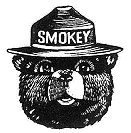United States Department of Agriculture, Forest Service, National Agroforestry Center

United States Department of Agriculture, Forest Service / University of Nebraska-Lincoln: Faculty Publications
Document Type
Report
Date of this Version
2016
Citation
General Technical Report RMRS-GTR-335
Fort Collins, Colorado: United States Department of Agriculture, Forest Service, Rocky Mountain Research Station
229 pages
Abstract
Hosts, distribution, symptoms and signs, disease cycle, and management strategies are described for 84 hardwood and 32 conifer diseases in 56 chapters. Color illustrations are provided to aid in accurate diagnosis. A glossary of technical terms and indexes to hosts and pathogens also are included.
Scope
The purpose of this handbook is to assist users in diagnosing tree diseases and reducing their impact. Included are the most damaging diseases, along with some that are the subject of frequent inquiry although of minor importance. The diseases included were those encountered primarily on trees in conservation plantings such as windbreaks, farmstead plantings, and living snow fences and in landscape plantings in recreational areas and near rights-of-way. Additionally, diseases affecting tree nurseries and Christmas tree farms in the Great Plains are included. By association, there is great overlap with the most common diseases encountered in native woodlands and urban plantings.
Diseases of fruit and nut trees are included when they are encountered on trees that are used in the above types of plantings. Information on nutrient deficiencies is not included, except in the chapter on chlorosis. There is no extensive coverage of damage by airborne pollutants except that caused by herbicides. The chapters are grouped as hardwood diseases and conifer diseases; within each of these categories they are classified as to the part of plant affected: foliage, branch and stem, vascular wilt, and root and soilborne. Most of the diseases are treated separately in the following standard format: “Hosts and Distribution,” “Symptoms and Signs,” “Disease Cycle,” “Damage,” “Management,” and “Selected References.” Select chapters cover several similar diseases affecting a particular host or similar types of pathogens, as in the chapter on stem decays (chapter 30). The emphasis of this tree disease guide is on disease situations in the Great Plains. Accordingly, no special effort has been made to include the total distribution of pathogens, or to list all of their hosts. Similarly, “Symptoms and Signs” and “Disease Cycles” are described primarily as observed in the Great Plains.
Included in
Agricultural and Resource Economics Commons, Environmental Policy Commons, Forest Biology Commons, Forest Management Commons, Natural Resources and Conservation Commons, Natural Resources Management and Policy Commons, Other Environmental Sciences Commons, Other Forestry and Forest Sciences Commons, Plant Sciences Commons


Comments
United States government work